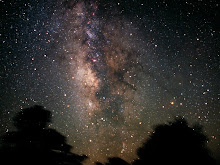In the past the actual truth about the Moon was faint among dreams that ranged through perhaps a thousand different possibilities of vaguely equivalent magnitude. Now, the actual truth is a solid One; dreams are of 10^-10, 10^-19, 10^-23, 10^-27, 10^-34 magnitude or less. It's enough to exhaust the war-making. There is nothing false about the Moon and none of the dreams remained true.
There is no air or water, arable land, or life on the Moon. It is bare, barren rock and dry, charged dust. The radiation is lethal, and the temperature changes from utterly lifeless cold to searing, vaporizing hot each of its slow days and nights. Perhaps there are traces of such conditions yet they are as scarce as true dreams.
This is an ancient, coarse problem. No matter how many, dreams can never describe the truth well. They are not supposed to. Dreams are the action in sorting memories until truth remains, which is then not dreamed again. In all the time that life has existed on Earth, it always was and always will be drawn toward the Moon by that most relentless of principles, gravity. That doesn't mean it is vital to go there often or even soon. Some gravity, like that of distant mountains, is rarely worth following unless you get a good place to live at a reasonable price.
The struggle for the Moon became part of life's first activity in the oceans long ago. Somewhat after single celled organisms first survived incomplete mitosis and hanged together, many-celled organisms or metazoa began to change their forms to improve their acquisition of food and other chances of survival. Estimates are, that was a billion years ago to perhaps half that. Tides caused by the Moon were flowing them onto land and then ebbing them to sea relentlessly with one of the most fundamental phenomena in the universe: gravity. So?
So there were no alternatives. The only progress that appeared to be successful and potentially peaceful was made by squids and octopuses and a few of the shellfish which managed to squirt themselves along using a balance between momentum loss and momentum conservation. After life had emerged onto land and creatures were clambering, walking, jumping and flying around it was still several hundred million years before it learned to stabilize its temper and charges, in mammals and electric eels.
Still, no alternative existed: life on Earth was implacably drawn by the Moon's gravity.
Birds flew higher and tried to fly long distances. Yet even when they flew from the North pole to the South and back, gravity inevitably caused them to fall to Earth before they fell to the Moon.
Then Men appeared, who conquered fire, spears, the stick-thrown spear, the bow and arrow. They build earth mounds and tried to climb to the Moon on them, probably inspired by the snake which had peculiar ideas for an organism that had never attained much height. No avail. It was a tempting breakthrough though because the mound could be as high as anyone constructed it.
Earth mounds always collapsed into mud and so the stone mound was constructed. Naturally shaped rocks were the first materials used yet they were always a problem; their stacking could not be relied on and it was far too difficult to find enough natural rocks that were of shapes that would fit stably on rocks that were already stacked. This is a more subtle problem than it may appear to be, because remember, people were drawn to the problem by gravity alone. Nothing else cared whether anybody reached the Moon or not. Gravity gave them only brutally simple choices like returning to the sea, going to the Moon, or going to the Earth. Some tried returning to the sea and became dolphins, whales and porpoises. Some remained close to the Earth – even the cold-blooded could do that, and so, reptiles were left demonstrating it was no avail. You either had to stack rocks or die, or balance between your own moment and that of things that you hurled. What was it that made some rocks stack neatly, and others fall tumbling to the ground? Or fall between the cracks? Men began to really think about Form.
For very simple people with no written record of detail it was not easy to find permanent solutions. Eventually rectangular stones were found to be best. Could they be made of mud bricks dried in the sun? That was tried. It never ascended in height much, although it was a recurrent possibility that endures to the present day because it did evolve into house-bricks. Breaking the rocks did not work. Sometimes soft rocks could be found, and then were discovered in abundance. Large, enduring constructions appeared early in certain places because they were constructed near where stone was found that was soft enough it could be carved into blocks that could be stacked, yet hard enough it would stand the crushing weight of stones stacked on top of themselves.
The problem is being simple enough, without descending or falling into chaos, to describe why Earth's life followed the path it did from the time it was first drawn to the Moon by the tides in ancient seas, to the time when it warred furiously struggling for close to ten thousand years with the wrong principles to reach the Moon. As we shall see, the final centuries presented exactly those principles again in more fury than had ever appeared in the past.
At any rate big, then large, huge, and monstrously titanic piles of rocks were constructed. In the process, remarkably subtle geometry was devised and used, exactly because the work was mandated by the sheer gravity of the Moon. Because gravity was a fundamental principle, and it acts the way it does to form rocks, asteroids, comets, boulders and such other things as planets and stars, it inevitably drew human beings into questions about form. That was why it was possible to graduate, gradually, from piling dirt up on dirt, to common rocks on common rocks, and then to carve soft stone into various shapes until the flat, then rectangular and cubical blocks were formed. That is why the human form was among the first forms carved into stone, in both small forms of art, and in massive sandstone pillars.
Still, the only forms of propulsion were hurling, ejecting, and that most sophisticated form of the latter, the way octopuses and squids moved themselves, by balancing momentum conserved against momentum lost – a form of excretion. That's important, because later it was to lead to war. It was far from clear that would be the first successful, yet still unsatisfactory, means of reaching the Moon. Instead, the best ways that could be imagined and depicted in enduring forms, were floating on water, flying like birds, or just floating in air. The latter was always tempting because after robes and clothing were invented, the spiritual life of human beings could imagine anything it wanted.
Thousands of years ago, none none of those actually worked, actually succeeded in reaching the Moon. But the large stone structures, many of them pyramids, remained in existence. They were at least durable, and though sometimes generations would pass when they were thought to be completely enigmatic, they would always draw people back to the problem of attaining heights. This is similar to the way in which the height of our architectures has resulted in the concept of “the commanding heights” since it became clear that the purpose of attaining the Moon was at least for some purpose rooted in, uh, commanding. Ruling, dominance, governing, leadership, or something like that.
If command is the only goal human beings follow in further attempts to reach space, it will only lead to more war. Science does not have the next solution, but it does have a better approach: patient, persistent research sustained through centuries, millennia, and, if necessary, aeons.
Already, progress is being made. For $39.95 plus a few bucks shipping and handling, you can purchase off the shelf a demonstration device that can sit on your commanding desktop in which a massive – yes, massive – piece of something floats in mid-air suspended only by magnetic fields provided by permanent magnets. You could make a tiny sculpture of a pyramid and so float, permanently, a pyramid in midair on the field provided by permanent magnets. It's not much altitude, not much payload, but the meaning is there. Check out the Edmund Scientific website, and look for “pyrolytic graphite diamagnetic levitation”.
Does this imply the fundamentally most important problem facing mankind is to reach the stars? No, because the stars do not balance human beings exactly on the alternatives of flying to the Moon or falling to the Earth. The Moon did, because, as we now understand, the barycenter of the Earth-Moon system is within the geometrical form of the spherical Earth. To be sure, the barycenter moves around, but it nowhere above themselves surface of the Earth. If the Moon had been slightly farther away or somewhat less massive, the barycenter would have been above the Earth's surface and so would not have compelled living species so neatly in a dance between reaching the Moon and falling to Earth.
That the world was following octopuses and squids only became obvious in hindsight. It was not the result of planning or comprehensive administration. The Roman calendar
had been devised after several empires nearly lasting a millennium had collapsed unable to sustain something unknown but vital. After Rome's new principles were instituted
the octopuses and squids were reinvented using Greek fire and by 300 AD, rockets were invented. Wikipedia has “The earliest verifiable notice of fireworks is a statement in 2 Vopiscus, Carus, Numerianus et Carinus, ch. xix. which says that fireworks were performed for the emperor Carinus (282-283) and later for Diocletian (284-286).” (http://en.wikipedia.org/wiki/Rocket).
The final centuries began in the 1600's with the discovery of the principles of lenses, such as those found in the eye, and the resulting optics made it possible to understand light itself. Immediately, the printing press, mass produced books, rockets, telescopes, microscopes, steam and then more sophisticated engines, engine powered wheeled vehicles, telegraph, airplanes, radio, television, atomic energy, transistors and mass production all came cascading into line. What was not foreseen was that it was to be the propulsion techniques of ancient octopuses and squids, embodied in the rockets of which would actually first reach the Moon. It had emerged before the discovery of modern optics.
The problem was that rockets were made into a weapon of war, not that they were used to reach the Moon. Thus, what would have been research was made into a causa bella of
almost continuous war, because war was found to make people inventive. They can be paid to be inventive, though it is not know if that will sustain itself through a thousand years at a time.
Consider the odd untried forms on the beaches at Normandy, like so many concrete jacks, or the odd forms of the Maginot Line.
That's where we are. People would rather stay with the Earth than fly to the Moon in rockets. People do not want to fight wars, particularly wars rooted in ancient instincts so stupid. People would rather work out their own lives for a few or several generations rather than impose massive programs on the Earth on the basis of unknown goals, unknown principles, and unknown consequences.
It is not a question of “embark on massive international cooperative programs to reach unattained goals by unattained (or existing inefficient) means” versus fight wars. It is a point of “sustaining international cooperation to develop the ways of life that people really want to live throughout the world, and letting them live it in peace.”
Even the birds are happy. Once drawn by the gravity of the Moon, they are now watching human beings, because they can see the human concept comprehends the Moon they once sought. They don't need to respond to the Moon as a matter of life or death, though they can if they want. That means that the Administration's cutback on urgency in developing more space flight to the Moon is correct. It is understood that the Moon is not only not that great a place to be, but its gravity was never important at all. The very gravity of the Moon is known to no longer compel people to the garden of life that the Earth is. It is a matter of very great gravity, that the Moon is what it was found to be. Not that something else might have been, or not been, but that what it was actually found to be is a matter of very great though not unexpected importance.
What the Moon actually is was always within the range of all the stories, tales, guesses, speculations, dreams and imaginings of what it might turn out to be when it was actually visited. The contrast between what it might have been and what it actually is changed, when the Apollo flights provided first hand living witness and material evidence of what the Moon actually is. When dreams, ideals, imagination and thought were the only way to understand the Moon, the difference between the most and least likely outcomes covered a range of, say, ten thousand to one, 10^3 to 1. With the actual evidence, the difference between the actual and the dreamed outcomes is more like 10^19, 10^23 or 10^34 to 1.
Subscribe to:
Post Comments (Atom)







No comments:
Post a Comment